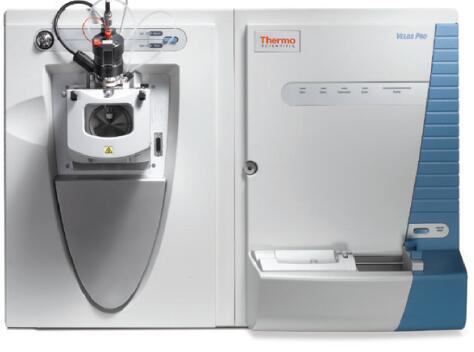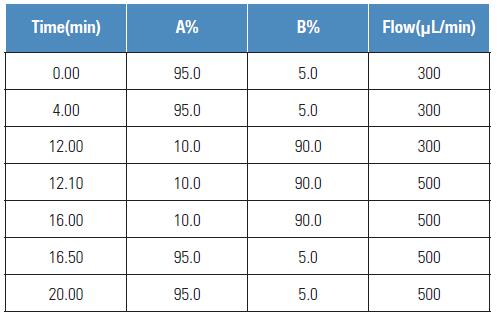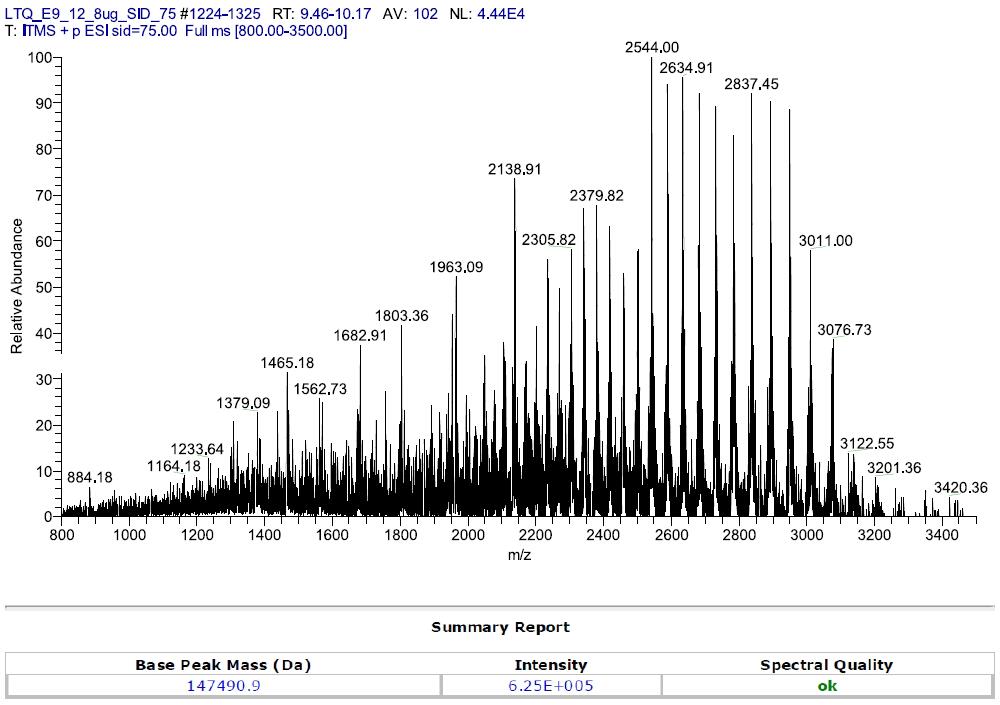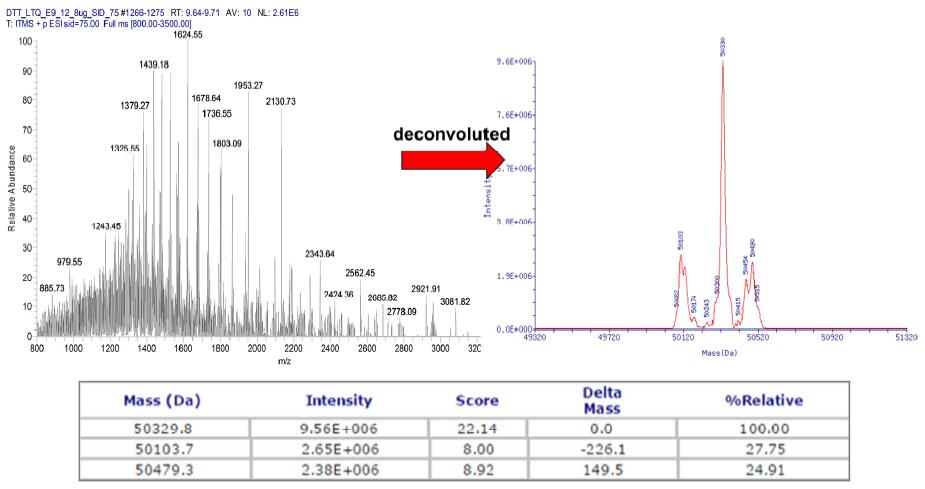Zhang Xiaoxi
Thermo Fisher Scientific (China) Co., Ltd.
Foreword
At present, monoclonal antibodies (mAbs) play an increasingly important role in the diagnosis and treatment of various diseases including cancer, and related research and development are also very rapid. Unlike traditional small molecule drugs, the structure of monoclonal antibodies is very complex and there are many heterogeneous phenomena, so the structural characterization of monoclonal antibodies is particularly important. Due to the "soft ionization" mode and high sensitivity, high-quality precision and wide dynamic range of bio-mass spectrometry, mass spectrometry is playing a role in molecular weight determination, protein sequencing, post-translational modification analysis and impurity analysis of monoclonal antibodies. More and more important role.
Ion trap mass spectrometry is often used for structural analysis of unknowns, as well as conventional protein sequencing, post-translational modification, and sugar chain structure analysis. Experimental results have shown that LTQ Velos ion trap mass spectrometry can be used for top down analysis of small intact proteins (16 kDa) [1]; however, complete molecular weight determination of 150 kDa intact monoclonal antibodies using ion trap mass spectrometry has not been reported.

In this study, we used Velos Pro dual-pressure linear ion trap mass spectrometry to determine the molecular weight of intact monoclonal antibodies and their light and heavy chains, respectively. The experimental results show that ion trap mass spectrometry can also determine the molecular weight of 150kDa intact monoclonal antibodies, and different glycoforms can be resolved.
Experimental part
Sample information
In this experiment, a complete monoclonal antibody sample was used at a sample concentration of 2 μg/μL; some samples were loaded onto a conventional liquid chromatograph, and the molecular weight was determined by mass spectrometry after on-line desalting; another partial monoclonal antibody sample was subjected to dithiothreitol. (DTT) The disulfide bond was reductively alkylated and loaded onto an LC-MS system to determine the light and heavy chain molecular weights, respectively.
Conventional liquid chromatography
Chromatograph: Thermo Scientific Accela 600
Column: Thermo BioBasic 8 HPLC (5 μm, 2.1 mm, 100 mm)
Loading amount: 4 μL (8 μg)
Mobile phase: A: 0.1% aqueous formic acid, B: 0.1% The gradient of the acetonitrile formic acid solution is as follows, wherein the first four minutes are the online desalination process:

Mass spectrometry
Mass Spectrometer: Velos Pro Linear Ion Trap Mass Spectrometer
Spray voltage: 3.8 kV
Capillary temperature: 275 °C
S-lens: 66.8%
Scan Rate: Normal
m/z range: 800-3500
In source CID: 75eV
AGC target: 3e5
data analysis
Data was deconvoluted using ProMass software.
Results and discussion
Velos Pro linear ion trap mass spectrometry for molecular weight determination of intact monoclonal antibodies

Figure 1. LTQ Velos Pro Determination of intact monoclonal antibody molecular weight original spectrum

Figure 2. Deconvolution of the spectrum of Figure 1.
It can be seen from Fig. 1 and Fig. 2 that, firstly, the molecular weight of the intact monoclonal antibody (150kD) is determined by Velos pro double-pressure linear ion trap mass spectrometry, and the peaks of different charge states are uniformly distributed in the obtained spectrum (Fig. 1). Deconvolution analysis using ProMass software showed that the molecular weight of the monoclonal antibody tested was 147491 Da, and different glycoforms were resolved (Fig. 2).
Velos Pro Linear Ion Trap Mass Spectrometry for Monoclonal Antibody Light / Heavy Chain Molecular Weight Determination
After the complete monoclonal antibody was reduced by DTT, the molecular weights of the light and heavy chains of the antibody were determined, and the results were as follows:

Figure 3. LTQ Velos Pro for determining the molecular weight of monoclonal antibodies

Figure 4. LTQ Velos Pro for determination of heavy chain molecular weight of monoclonal antibodies
It can be seen from Fig. 3 and Fig. 4 that for the monoclonal antibody after DTT treatment, the light and heavy chain molecular weights are respectively determined, and the peaks of the peaks of different charge states are uniformly distributed; after deconvolution, respectively The molecular weights of the light and heavy chains are obtained. Among them, the heavy chain part has more peaks (Fig. 4), which may be caused by degradation of different glycoforms and monoclonal antibodies.
in conclusion
In this study, we used Velos Pro dual-pressure linear ion traps for molecular weight determination of intact monoclonal antibodies and their light and heavy chains. The results show that, firstly, for intact monoclonal antibodies, ion trap mass spectrometry can determine the molecular weight and distinguish different glycoforms; for DTT reduced light and heavy chains, ion trap mass spectrometry can also determine its molecular weight and different glycoforms. Ion trap mass spectrometry can meet the needs of traditional qualitative analysis, and is a powerful weapon for structural analysis of unknown compounds. It is widely used in peptide drug analysis, sequence identification and post-translation modification research in protein drug research. Through the research in this paper, we prove that ion trap mass spectrometry can also be used to determine the molecular weight of monoclonal antibodies.
At the same time, ion trap mass spectrometry can perform multi-stage mass spectrometry analysis of compounds, which plays an indispensable role in the post-translational modification of peptides, especially the fine structure analysis of sugar chains. In addition, the dual-pressure linear ion trap Velos Pro features both high-voltage and low-voltage traps, which provide maximum ion capture, cracking, and isolation efficiency. The low-voltage well provides resolution and scan rates unmatched by other ion trap mass spectrometers. In summary, ion trap mass spectrometry is also a powerful tool for correlation analysis in the biopharmaceutical industry.
references
[1] Tonya Pekar Second, Joshua J. Coon, Vlad Zabrouskov. A Novel Dual-Pressure Linear Ion Trap Mass Spectrometer Improves the Analysis of Complex Protein Mixtures [J]. Anal Chem. 2009 September 15; 81(18): 7757– 7765.
Fungi, a large class of chlorophyll - free, can not carry out photosynthesis, heterotrophic lower class of plants. These include bacteria, slime molds and fungi. Their common characteristics are: the plant body has no differentiation of roots, stems and leaves, does not contain chlorophyll and other photosynthetic pigments (except a few photosynthetic bacteria), can not carry out photosynthesis, saprophytic life or parasitic life, that is, heterotrophic life. Most of the reproductive organs are single-cell structures, and the zygotes do not develop into embryos.
Ganoderma Lucidum Extract,Lion's Mane mushroom Extract,Chaga Mushroom Extract
Xi'an Double H Health Technology Co., Ltd , https://www.dhextract.com